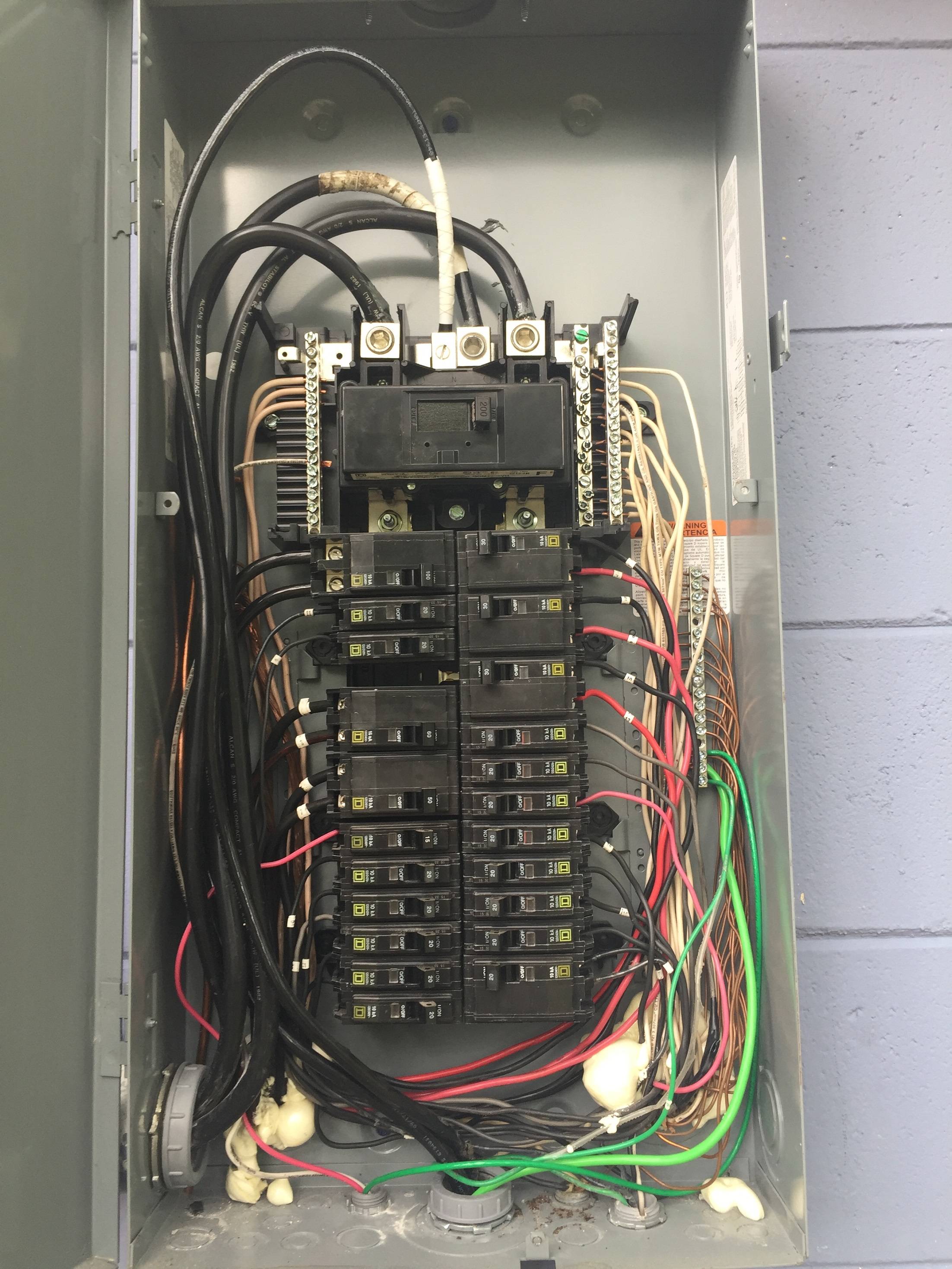I had a licensed electrician replace my main panel and also install a subpanel in my garage. At the time I knew nothing about electrical, and now I know just barely more than nothing. I have recently learned that the ground bar and neutral bar should be bonded. I have examined both my main and subpanels and determined my bars are not bonded. Should the ground bars in both my main and subpanels be connected?
2 Answers
Neutral and ground should only be bonded at the service equipment. This could be at the service drop, the meter, or the service disconnect (250.24(A)(1)).
Looks like the neutral is bonded in your main panel, via the bonding screw.
The second panel is then fed using four wires, to keep ground and neutral separate.
-
How does that bonding screw connect to the bus bar used for grounds over on the right-hand side of the box? Through the box itself?– JohnnyCommented Apr 15, 2016 at 0:32
-
1@Johnny It's connected to the bar that ties into the main neutral line. See the original image and look towards the center.– TFKCommented Apr 15, 2016 at 3:51
-
1Johnny, it goes all the way through and screws into the metal housing.– KrisCommented Apr 16, 2016 at 9:22
-
1The metal housing is the ground path. I think it's a weak ground path, I would "belt and suspenders" with a bit of ground wire between bars. Commented Nov 12, 2017 at 7:54
It's a trade of as far as safety goes. If the ground is bonded to neutral, and there is an an open neutral situation, or lightning strike, or utility transformer primary to secondary short, all your grounded appliances like washing machines and pool pumps can become live with dangerous Voltage, since your ground rod or water pipe likely has too high of a resistance to keep the Voltage at a safe level. On the other hand, double insulated devices would be safer if someone is using one.
The best solution for safety, especially if you have a pool pump or other grounded appliances where people are frequently in contact with them, is to put in a separate ground rod somewhat far away from the other one and use one for neutral ground and one for ground ground. Now you have the advantages of bonded and non bonded ground at the same time. Now nobody dies stepping out of the hot tub when the 7.2kV utility line shorts out and contacts your 120V service drop.
-
An aside: Good olde days telephones leap off the wall when 11kV is applied to the phone line. (Sample of one). || Worms crawl out of the ground when resdidential phase and neutral are reversed at the switchboard. Cold taps produce steam and the whole house goans (presumably from water boiling in the pipes. (Sample of one). Commented Sep 10 at 14:40




